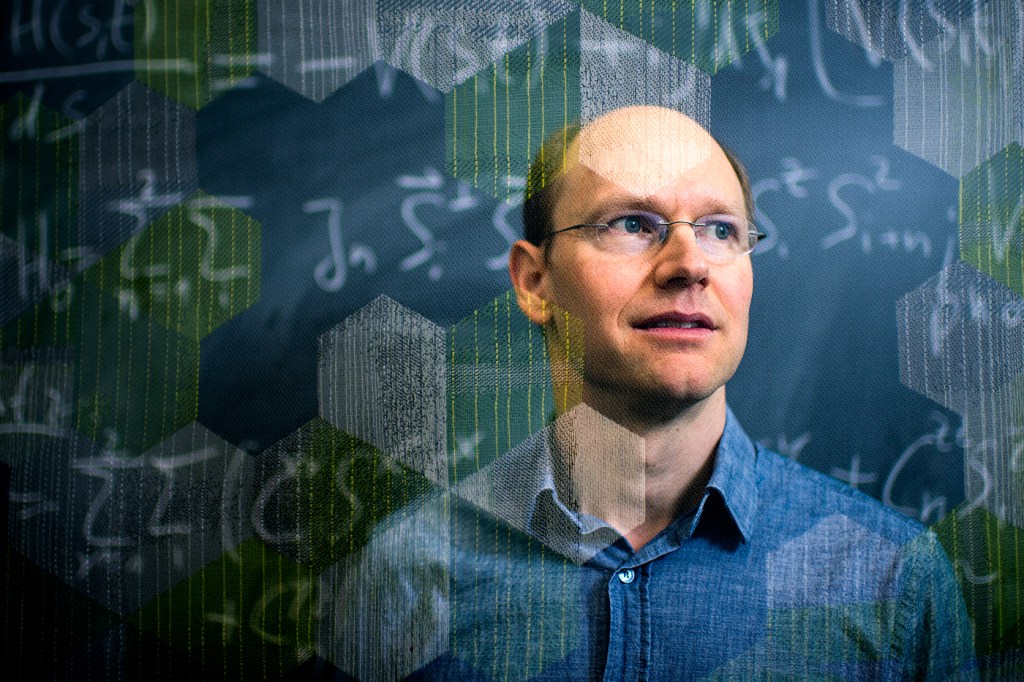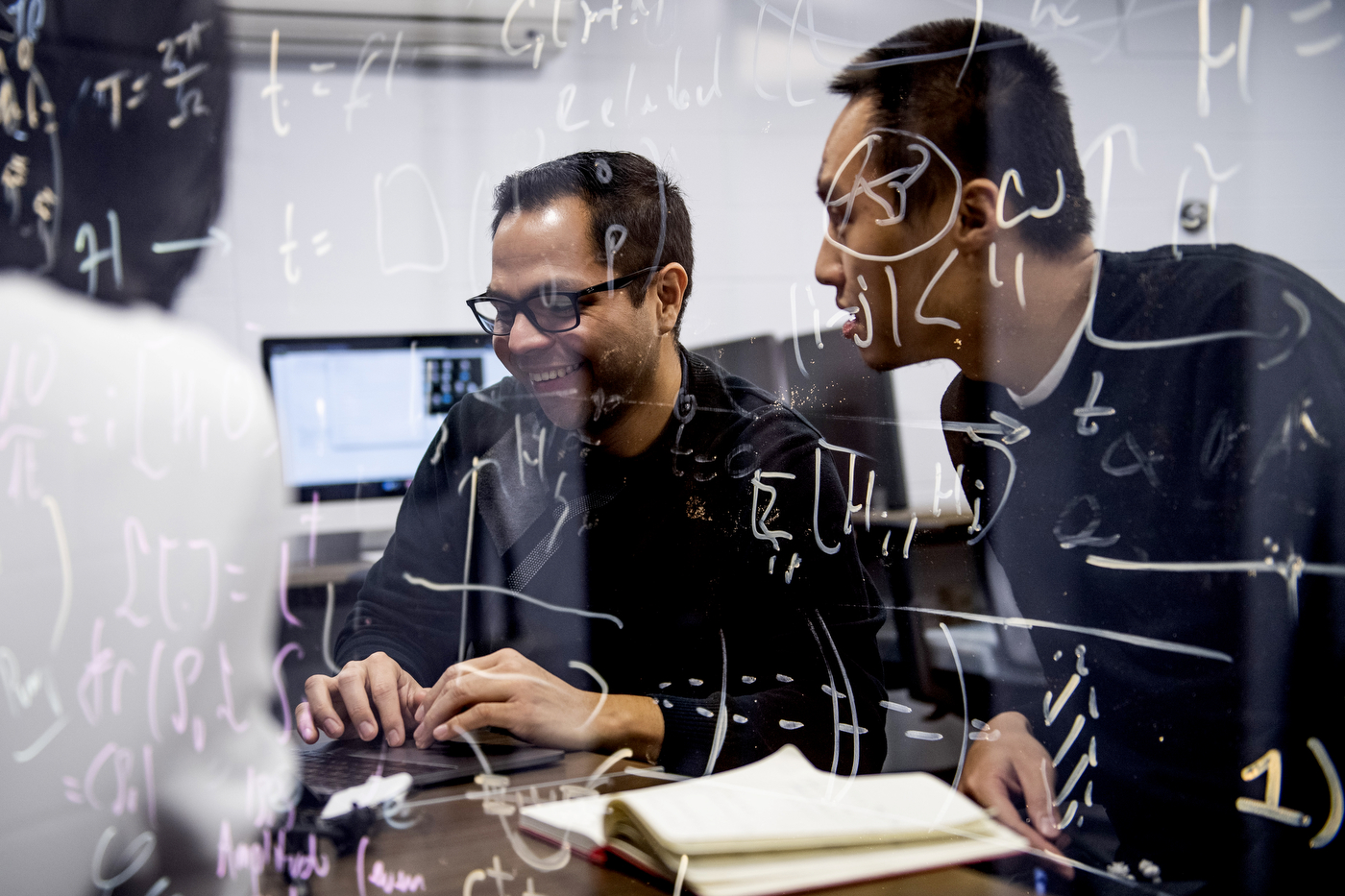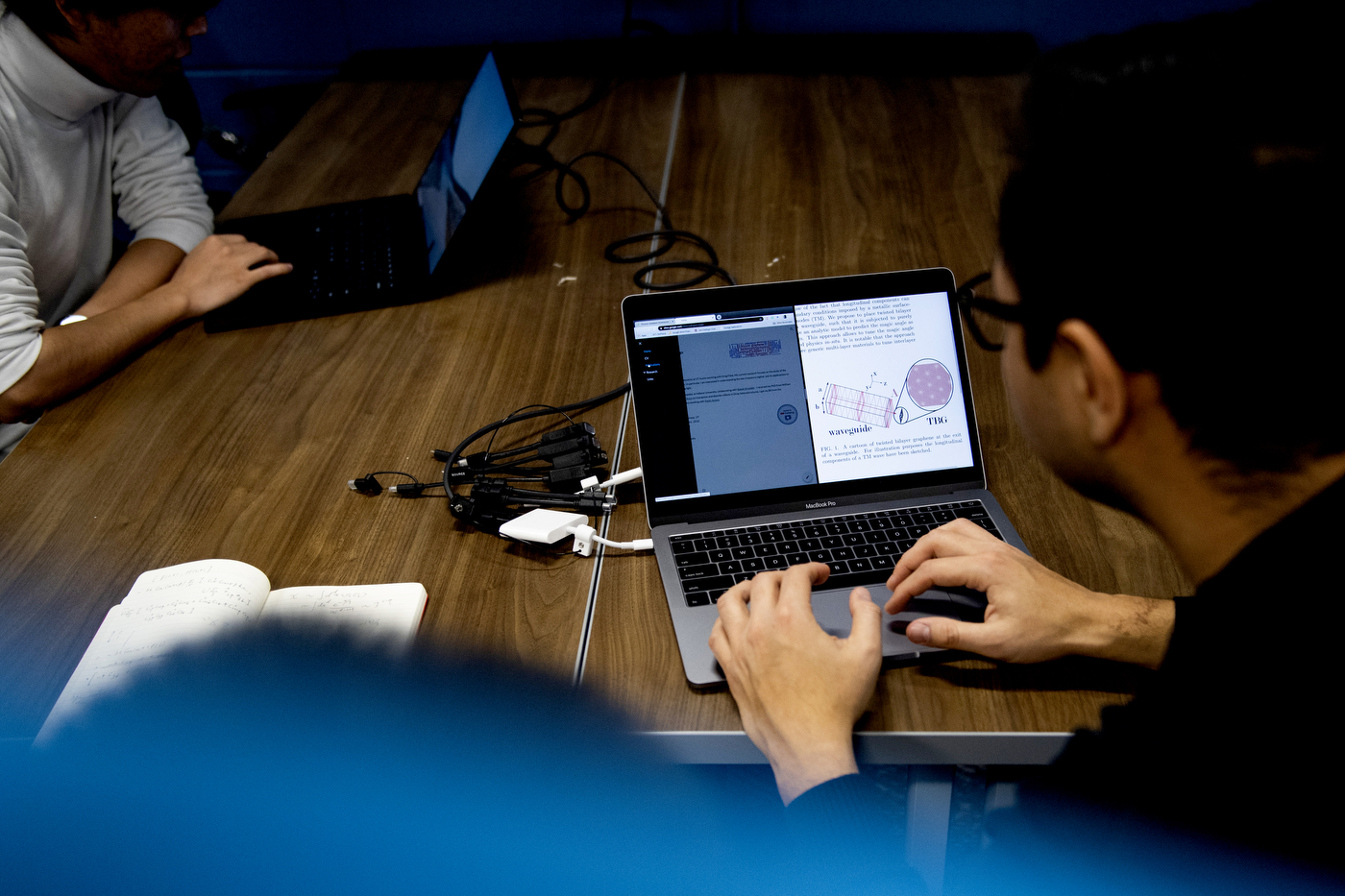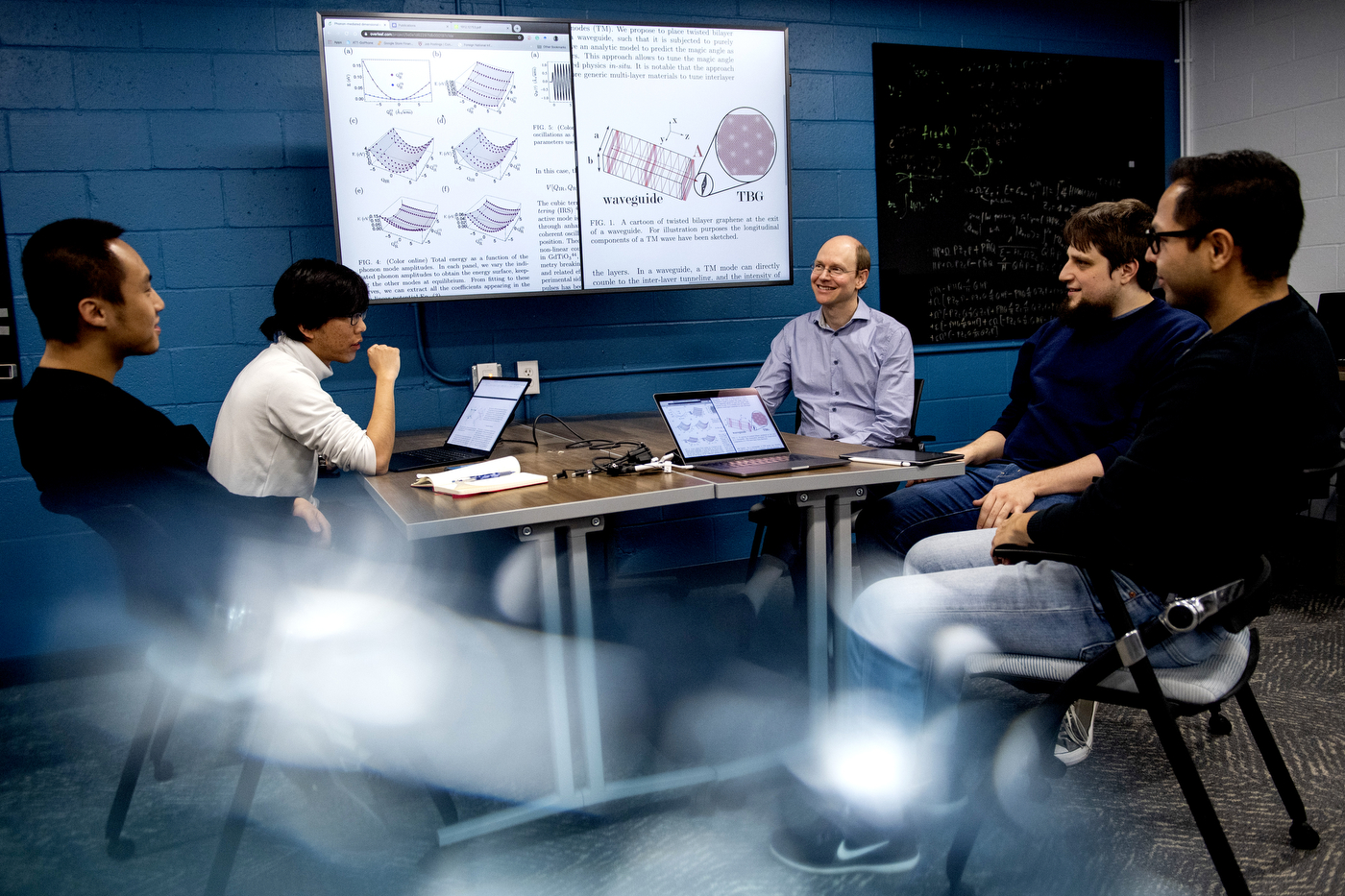This quantum physicist is on a quest to discover the inner workings of subatomic particles

Gregory Fiete grew up playing outside in the woods, lakes, and swamps of the Deep South and Midwest. When he was a fourth grader in South Carolina, a friend suggested that they go fishing because it was the perfect time. It was late spring, and there was a full moon, which is when the fish would be more likely to bite as they spawned.
Fiete, a professor of physics at Northeastern, didn’t call it science at the time. But it was an experience that sparked scientific wonder—a realization that some barren rock in space could influence life on Earth.
“It was this idea that there’s a lot of connectedness in nature, a lot of patterns,” Fiete says. “The patterns can be understood and used to do something useful, which for me was catching fish.”
Fiete now looks for other kinds of patterns: the ones hidden within electrons of solid matter. He is leading a group of theoretical physicists who are working to understand and predict subatomic mechanisms within materials that could lead to better and faster technologies based on quantum systems.




The inner workings of these materials can be difficult to understand because some of the laws of quantum physics aren’t exactly intuitive for most people. Even some physicists would say that certain rules of quantum mechanics can be spooky and make people uncomfortable.
Fiete, who spent 10 years at the University of Texas at Austin before joining Northeastern in 2019, thinks that exploring the possibilities hidden within quantum materials through theories and calculations isn’t that much different from recognizing the patterns of activity that helped him make big catches based on moon phases.
Now, the question of what is possible (quantum mechanically speaking) is at the heart of Fiete’s research. His team focuses on the fundamental behaviors and characteristics that move electrons to produce new properties within special materials, such as superconductors.
“You need to understand how something works, which is about recognizing the patterns in it,” Fiete says. “That’s essentially what science amounts to—we’re just trying to understand how things work.”
Physicists over the last century have developed a robust understanding of the particles that make up a material. And scientists like Fiete are pushing the field to dig deeper and build on this knowledge to fully understand the mechanics that control the collective behavior of electrons within solid matter. These motions can have important implications for the ability of a material to conserve energy or transmit heat.
Fiete suspects that in the next 80 years, the fundamental understanding that he and other scientists are building will bring the power of technologies based on quantum physics within a closer reach for researchers in several fields.
“Many medical technologies now rely on physics, like magnetic resonance imaging machines, and there are various radiation treatments and laser surgeries,” Fiete says. “These technologies are all based on quantum physics, and they are a part of our medical care now.”
Unlocking the power of quantum materials could also catalyze a new era of technology that will rely on quantum computers. Such computers could calculate in minutes what would take the supercomputers of today thousands of years.
But to do that, researchers need to extrapolate the understanding that theoretical physicists already have of electrons to harness the hidden powers of quantum materials.
In 2019, Fiete showed that it is possible to use lasers to enhance materials used in electronics. As a laser is pumped through a material, the arrangement of its electrons changes in a way that it supercharges their ability to move electricity.
Shooting materials with lasers could enhance their properties in other different ways, including changing magnetic properties or conducting electricity without losing any energy. It could also make for a bundle of multiple materials in one—or generate completely new properties.
“There are whole zoos of different types of properties that physicists are interested in,” Fiete says. “An even more intriguing question is, what kinds of new matter can we realize when we keep the laser on?”
In 2015, Fiete provided a new theoretical way to find properties emerging from materials known as topological insulators, which are known in the scientific community for their superior ability to conduct electricity.
“We keep coming up with a finer and finer comb to distinguish one material property from another,” Fiete says. “And the downstream are these kind of quantum technologies that have the capability to potentially change so many things in commerce, national security, and basic science itself.”
Just as internal forces drive quantum materials, Fiete says, the intangible aspects of being a physicist will advance his field.
“What matters is that I had a great discussion with a student or another faculty member, and that we understood something and helped move science forward,” says Fiete, whose list of recognitions includes a Presidential Early Career Award for Scientists and Engineers, which he received from President Obama. “It matters that [our] idea will then move the science forward.”
For media inquiries, please contact media@northeastern.edu.





